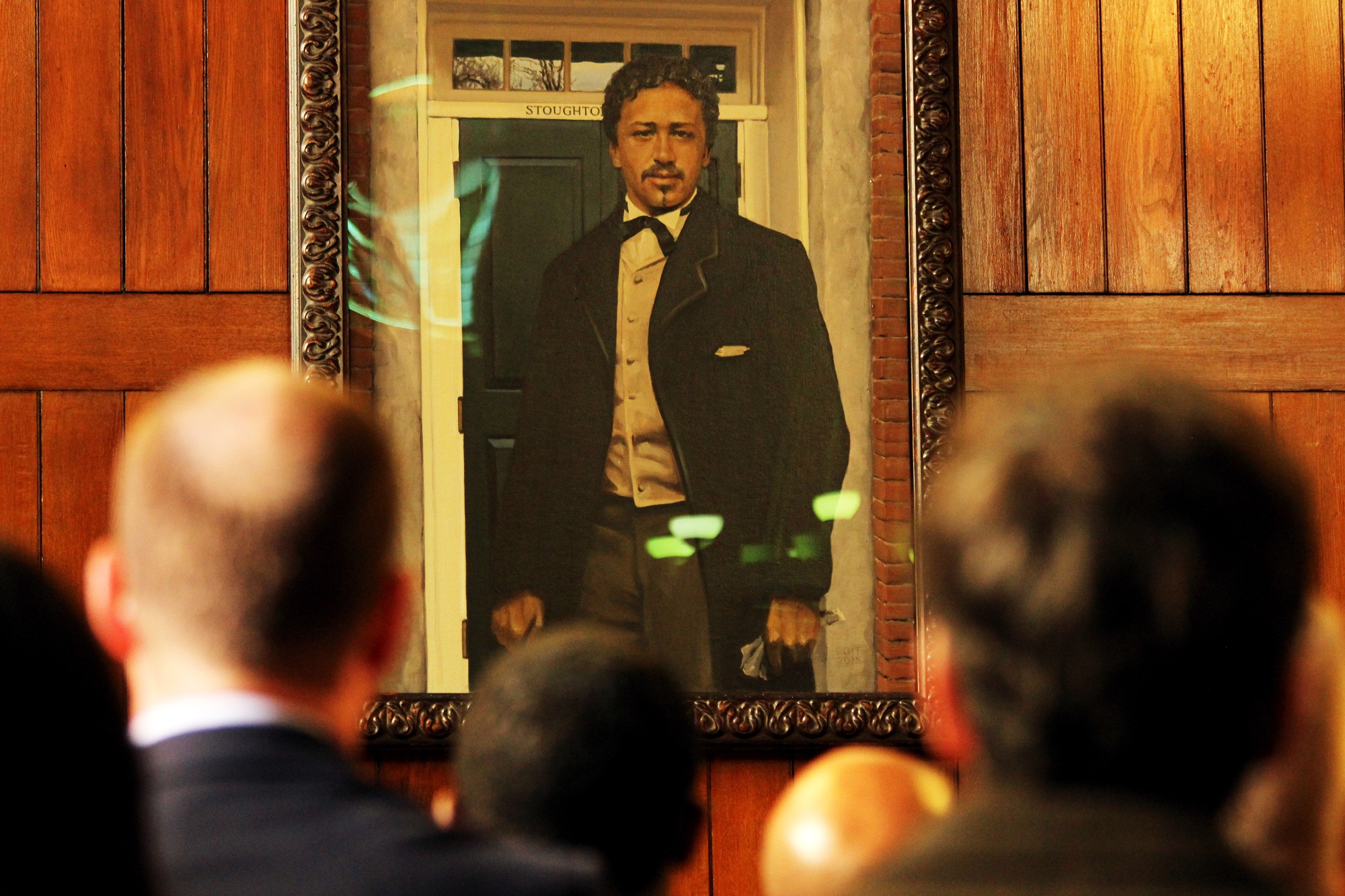
News
Cambridge Residents Slam Council Proposal to Delay Bike Lane Construction

News
‘Gender-Affirming Slay Fest’: Harvard College QSA Hosts Annual Queer Prom

News
‘Not Being Nerds’: Harvard Students Dance to Tinashe at Yardfest

News
Wrongful Death Trial Against CAMHS Employee Over 2015 Student Suicide To Begin Tuesday

News
Cornel West, Harvard Affiliates Call for University to Divest from ‘Israeli Apartheid’ at Rally
‘Ghost Portraits’ Commemorate Underrepresented Minorities at School of Public Health

As Harvard reckons with its historical ties to slavery, an exhibit at the School of Public Health this semester aims to honor the overlooked contributions of significant black and Native American figures in the field.
The “Ghost Portraits” installation consists of eight portraits featuring African-American and Native American pioneers, including five women, in public health and medicine. Printed on translucent fabric in black and white, they hang in the Kresge Atrium alongside color portraits of 14 of the Public Health School’s founders and deans, all depicting white men.
Noting students of color comprise roughly a third of the School of Public Health, Lisa J. Rosowsky ’87—a professor at the Massachusetts College of Art and Design who curated the portraits—said she wanted to see that diversity represented on the school’s walls.

“Just looking around I can see that [the portraits] didn’t reflect the current population of the students,” Rosowsky said. “The first thing I wanted to do was to disrupt that gaze of all those white men kind of looking down students, staff, and faculty on that very commonly used space.”
The exhibit was commissioned and opened last May as part of a Public Health School conference entitled “Slavery & Public Health: Past, Present, and Future.” Initially set to close in October, the exhibit will stay up until the end of the fall semester due to an overwhelmingly positive response, according to Zennon R. Black, an administrator in the school’s Office of Diversity and Inclusion.
The “Ghost Portraits” display comes as the University moves to acknowledge the history of slavery and its impact on Harvard. Last week, Harvard Law School unveiled a monument to the slaves owned by the Royall family, who endowed the institution. In April 2016, University President Drew G. Faust dedicated a plaque to four slaves who worked and lived on campus in the 18th century.
Rosowsky said that she spent a month researching the history of public health and compiling a large list of candidates for the portrait series, then another month searching for portraits of the individuals in national archives and local historical societies.
“Many of the people who made the final cut were ‘first ofs’— one was the first Native American to go to medical school, for example,” she said. “Each of these individuals had some significant contribution to public health.”
After the fall semester, the exhibit will be replaced by a portrait display of current Public Health School staff and faculty to “reflect the changing community,” Black said.
“I think this installation has begun to allow students, whether they identify as African American, Native American or not, to now see themselves succeeding as leaders in the field of public health,” Black said.
—Staff writer William L. Wang can be reached at william.wang@thecrimson.com.
Want to keep up with breaking news? Subscribe to our email newsletter.
